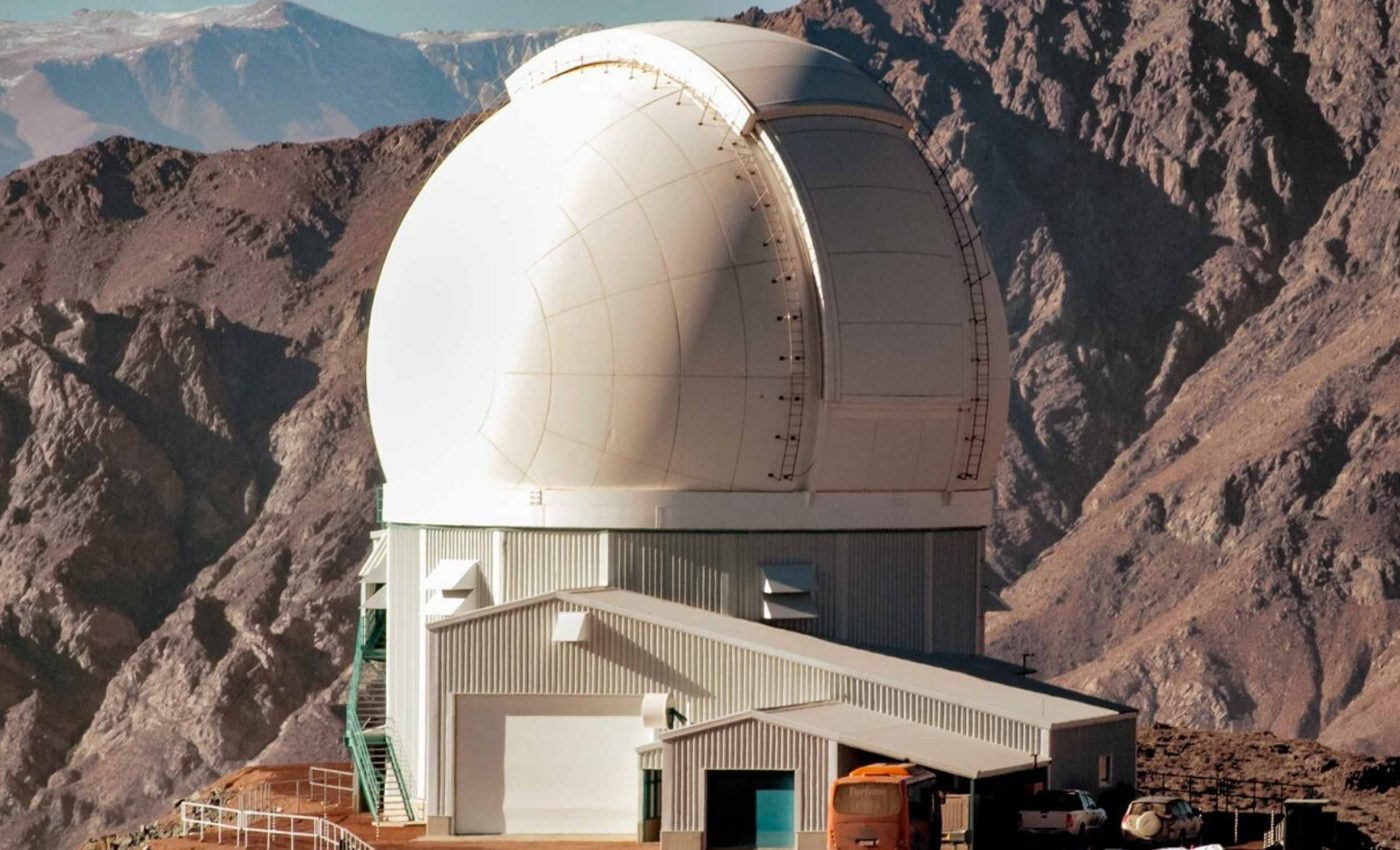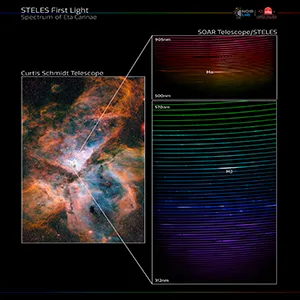
New instrument chooses Eta Carinae and the Carina Nebula as its first target
The Southern sky just got a sharper set of eyes. A new high-resolution echelle spectrograph on the 4.1 meter SOAR Telescope in Chile has taken its first look at Eta Carinae, a volatile pair of massive stars that keeps astronomers on their toes.
This spectrograph uses finely spaced diffraction gratings to separate light into detailed spectra for precise measurement.
The instrument’s debut is more than a ribbon cutting. It sets up fresh tests of how violent stars grow, shed material, and change over time, using spectra that reveal what the eye cannot see.
Why Eta Carinae matters
Eta Carinae’s story is written in outbursts. The system brightened dramatically during the Great Eruption that began in 1837, then faded as the blast flung out a dense nebula called the Homunculus.
Those clouds now hide much of the light, but the numbers are still staggering.
The primary star weighs in at about 90 times the Sun’s mass, while the companion is about 30 solar masses, and together they pour out roughly five million times the Sun’s luminosity.
How SOARS studied Eta Carinae
Spectroscopy is the method astronomers use to split starlight into its component wavelengths and measure the fingerprints of atoms and ions, along with motion and rotation through Doppler shifts.
These measurements turn light into physical facts such as temperature, speed, and composition.
The instrument at SOAR separates incoming light into a blue arm and a red arm that together span 300 to 550 nanometers and 530 to 890 nanometers, respectively.
Capturing that wide range at high resolution in one go means fewer compromises and cleaner comparisons between features formed in different layers of a star’s atmosphere or wind.
Because the spectrograph gathers a broad swath of visible light in a single exposure, it makes efficient use of precious observing time.
Pair that sensitivity with SOAR’s steady imaging and faint objects become fair game for precise measurements.
STELES changes the eta Carinae story
Eta Carinae is famous for a 5.52 year cycle tied to its orbit. High resolution spectra across the full optical window will let teams track wind speeds, shock heating, and line profile changes through the next periastron passage with fine detail.
The data helps untangle the complex interactions that occur when the powerful stellar winds from both stars crash into each other.
It also puts to the test models that explain how radiation, magnetic fields, and orbital geometry influence the evolving spectrum at their closest encounter.

Chasing the first stars
The new spectrograph is not only for famous showpieces. It will also sift through the halos of our galaxy and nearby dwarfs for the most ancient, chemically primitive stars.
A recent study highlights that astronomers use Population III to describe the Universe’s very first generation of stars, thought to have formed a few hundred million years after the Big Bang.
These stars contained only the original elements, hydrogen and helium, with virtually no heavier elements, or “metals,” because those were created later inside stars through nuclear fusion and supernova explosions.
To find candidates, observers look for stars with extremely low traces of elements such as iron, carbon, and magnesium.
Detailed abundance patterns across dozens of spectral lines can reveal whether a star formed from gas touched by only one or a few early supernovae.
By recording many diagnostic lines in one shot, the instrument streamlines that work. It also improves the odds of catching rare features that can flag exotic enrichment paths in the early Milky Way.
Long road to first light
Building a precision spectrograph is never quick. Teams in Brazil and Chile assembled and tested components, overcame pandemic delays, and aligned optics at SOAR’s mountaintop site on Cerro Pachon before pointing the instrument at Eta Carinae in early August 2025.
The first successful observations marked a major milestone for the project and were celebrated as a shared success between the teams in Brazil and Chile who built and installed the instrument.
Project leaders said that the new STELES spectrograph, a tool designed to capture and separate starlight into its detailed colors, will greatly extend SOAR’s ability to study the sky.
Its high resolution and ultraviolet sensitivity will help scientists better understand how stars and planets form, how gas moves between them, and how massive stars behave.
With additional on sky engineering checks in the months ahead, regular observations are slated to begin in early 2026.
Early programs will target metal poor stars, hot star winds, and time sensitive phenomena that benefit from the instrument’s broad wavelength grasp and stable calibration.
Eta Carinae will keep its place on the docket. Watching its next cycle with this setup could pin down how the winds accelerate and how the dense Homunculus Nebula filters and scatters the light that reaches us.
—–
Like what you read? Subscribe to our newsletter for engaging articles, exclusive content, and the latest updates.
Check us out on EarthSnap, a free app brought to you by Eric Ralls and Earth.com.
—–













